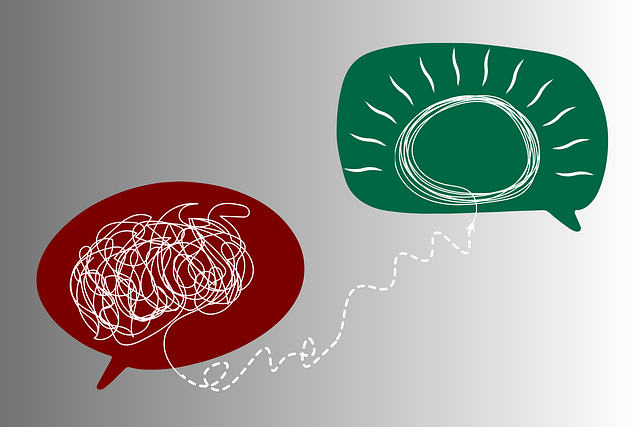Risk assessment and effective management are crucial in therapy for children, focusing on identifying and mitigating potential hazards. By analyzing likelihood and impact, therapists implement strategies like structured sessions with Confidence Boosting activities, Mental Wellness Journaling, and Stress Management Workshops tailored to children's needs. These initiatives enhance resilience and promote mental wellness. In child-centric environments like schools and therapy centers, robust risk management plans prioritize safety through evidence-based stress reduction methods, regular reviews, and staff training. Continuous improvement in risk assessment practices adapts to emerging challenges, cultural sensitivity, and diverse populations, ensuring inclusive and effective treatment strategies for Therapy for Children and Stress Management.
Risk assessment and harm minimization are essential components of safe practice in children’s therapy. This comprehensive guide explores critical aspects of risk management, from understanding foundational concepts like risk assessment to identifying unique risks in pediatric settings. We delve into practical strategies for stress management and provide a step-by-step approach to creating robust risk mitigation plans tailored to child-centric environments. Through continuous review and improvement, therapists can ensure adaptability in risk assessment, fostering secure and therapeutic spaces.
- Understanding Risk Assessment: A Cornerstone of Safe Practice
- Identifying and Evaluating Risks Specific to Children's Therapy
- Harm Minimization Strategies: Practical Applications in Stress Management
- Creating a Comprehensive Risk Management Plan for Child-Centric Environments
- Continuous Review and Improvement: Ensuring Adaptability in Risk Assessment
Understanding Risk Assessment: A Cornerstone of Safe Practice

Risk assessment is a fundamental process in creating safe environments, especially within therapy settings for children. It involves identifying potential hazards or risks and analyzing their likelihood and potential impact. By understanding these factors, therapists can implement effective harm minimization strategies to ensure the well-being of young clients. This proactive approach is crucial in fostering an environment that promotes mental wellness and encourages healthy development.
In the realm of therapy, risk assessment goes beyond mere identification; it includes developing comprehensive plans to mitigate or manage these risks. This might involve designing Confidence Boosting activities within structured sessions, providing guidance on Mental Wellness Journaling as a therapeutic tool, or organizing Stress Management Workshops tailored to children’s needs. Such initiatives empower both therapists and young individuals to navigate potential stressors, ultimately enhancing overall resilience and promoting a healthier emotional landscape.
Identifying and Evaluating Risks Specific to Children's Therapy

Identifying risks specific to children’s therapy involves a nuanced approach that goes beyond general risk assessment. Children, due to their developmental stage and unique experiences, may present with distinct challenges related to trauma, anxiety, or emotional regulation. For instance, a child experiencing stress might manifest it differently than an adult, potentially leading to escalated behavioral issues or suppressed emotions. Evaluating these risks requires a deep understanding of childhood development and the impact of past traumatic experiences.
Therapists play a pivotal role in creating safe spaces for children while implementing tailored risk management strategies. This includes integrating trauma support services within therapy sessions to address underlying issues. Moreover, effective risk assessment should consider the potential for burnout among healthcare providers, as high caseloads and intense emotional demands can impact their well-being and subsequently affect patient care. Implementing burnout prevention strategies alongside robust risk management planning ensures a holistic approach to both children’s therapy and mental health professional support.
Harm Minimization Strategies: Practical Applications in Stress Management

Harm Minimization Strategies play a pivotal role in Therapy for Children’s Stress Management. By employing practical applications, therapists can effectively support young individuals in navigating and mitigating stress responses. These strategies often involve a multi-faceted approach, combining techniques from cognitive behavioral therapy to promote positive thinking and emotional regulation. For instance, teaching children mindfulness practices helps them cultivate inner strength development while learning to manage their moods more effectively.
Through trauma support services, therapists can guide young clients in processing and overcoming past traumatic experiences, which significantly contributes to stress reduction. By fostering a safe and supportive environment, these harm minimization strategies empower children to build resilience, enhancing their ability to cope with stressors throughout their lives. This proactive approach not only addresses immediate concerns but also paves the way for long-term mental well-being.
Creating a Comprehensive Risk Management Plan for Child-Centric Environments

Creating a Comprehensive Risk Management Plan for Child-Centric Environments involves a multi-faceted approach that prioritizes safety and well-being. In these environments, such as schools, therapy centers, or daycare facilities, the focus should be on fostering a nurturing atmosphere while proactively identifying and mitigating potential risks. A robust risk management plan begins with a thorough assessment of the physical space, staff training, and existing policies. Incorporating evidence-based stress reduction methods and integrating mood management techniques into the daily routine can significantly enhance children’s resilience.
By implementing structured programs that promote resilience building, these environments can create a safe haven where children feel secure and supported. Regular reviews and updates of the risk management plan are essential, as new challenges emerge, ensuring that every aspect of the plan remains effective and relevant. This proactive approach not only minimizes potential harm but also fosters an environment conducive to optimal child development and therapy outcomes.
Continuous Review and Improvement: Ensuring Adaptability in Risk Assessment

In an ever-evolving landscape of mental health care, continuous review and improvement are vital to ensure adaptability in risk assessment practices. This proactive approach allows professionals to stay ahead of emerging challenges, such as new forms of mental illness or shifting societal attitudes, including stigma reduction efforts. By regularly evaluating existing protocols and integrating feedback from diverse communities, therapy for children can be refined to meet changing needs. For instance, the implementation of community outreach program initiatives enhances cultural sensitivity in mental healthcare practice, fostering more inclusive and effective treatment strategies.
Such continuous improvement underscores a commitment to not only harm minimization but also enhancing stress management techniques tailored to various populations. This dynamic approach recognizes that mental illness manifests differently across cultures and communities, necessitating adaptable risk assessment tools that respect and incorporate these nuances. Through ongoing review, professionals can ensure their practices remain responsive, effective, and sensitive to the diverse tapestry of human experience.
Risk assessment and harm minimization planning are essential components of providing a safe and supportive environment for children in therapy. By understanding the unique risks associated with children’s therapy, implementing practical stress management strategies, and creating comprehensive risk management plans, professionals can create a secure space for healing and growth. Continuous review and improvement ensure adaptability in risk assessment, allowing for better-informed decision-making and enhanced safety measures tailored to the evolving needs of each child. This holistic approach to therapy for children and stress management is paramount in fostering positive outcomes and minimizing potential harms.









